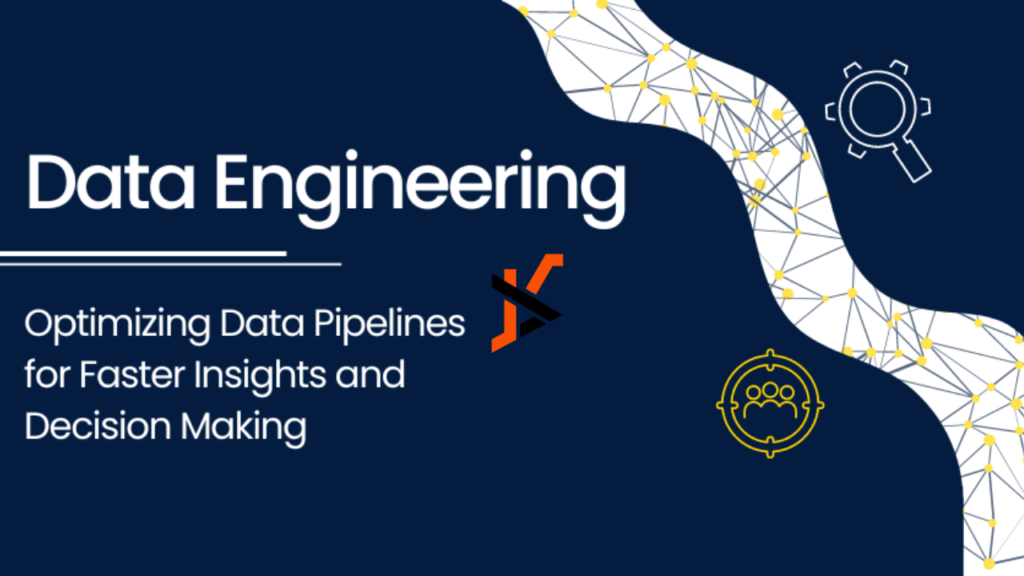Organizations are inundated with vast amounts of information generated from various sources. To extract meaningful insights and foster informed decision-making, businesses must optimize their data pipelines. A well-structured data pipeline ensures that data is collected, processed, and delivered efficiently, enabling analytics capabilities that lead to strategic advantages.
Understanding the Importance of Data Pipelines
A data pipeline is a series of processes that move data from one system to another, transforming it along the way to make it suitable for analysis. The importance of optimizing these pipelines cannot be overstated. Inaccurate or slow-moving data can result in delays in decision-making, missed opportunities, and ultimately, lost revenue. Efficient data pipelines streamline operations, improve data quality, and enhance the speed of analytics.
Identifying Bottlenecks in Data Flow
The first step in optimizing a data pipeline is identifying bottlenecks that hinder performance. Bottlenecks can occur at various stages, including data ingestion, transformation, or loading into analytical tools. Organizations should conduct a thorough analysis of their current data flow to pinpoint areas requiring improvement. This can involve monitoring data processing times, and tracking errors, and latency issues. By understanding where delays occur, businesses can implement targeted strategies for enhancement.
Implementing Automation
Automation is a key driver of efficiency in optimizing data pipelines. Manual processes can lead to errors and slow down data delivery. By automating data ingestion, transformation, and loading, organizations can ensure a more consistent and reliable flow of information. Tools such as Apache Airflow and AWS Glue can help automate workflows, allowing teams to focus on analysis rather than data management. Additionally, automation can enhance data quality by standardizing processes and reducing the likelihood of human error.
Utilizing Cloud Solutions
Cloud computing has transformed the landscape of data management and analytics. Cloud-based solutions provide scalability, flexibility, and cost-effectiveness, making them ideal for optimizing data pipelines. Organizations can leverage cloud storage and computing power to handle large volumes of data without the need for extensive on-premises infrastructure. This flexibility allows businesses to quickly adapt to changing data needs and optimize their pipelines for enhanced performance.
Enhancing Data Quality
Data quality is paramount when it comes to effective analytics and decision-making. Poor-quality data can lead to misguided insights, which can have severe consequences for businesses. Optimizing data pipelines involves establishing robust data validation and cleansing processes. This can include implementing automated checks to ensure data accuracy, consistency, and completeness. Organizations should also consider establishing data governance frameworks to maintain high data quality standards across their pipelines.
Integrating Real-Time Data Processing
In an era where timely information is critical, integrating real-time data processing into data pipelines is essential. Traditional batch processing methods can introduce delays that hinder immediate decision-making. By adopting stream processing technologies, organizations can analyze data in real-time as it is ingested. Solutions like Apache Kafka and Apache Flink enable businesses to process and analyze data on-the-fly, ensuring that decision-makers have access to the most current information available.
Prioritizing Scalability
As businesses grow, so do their data requirements. Optimizing data pipelines requires a focus on scalability to handle increasing data volumes and complexity. Organizations should design their pipelines with scalability in mind, allowing for easy expansion without significant overhauls. Cloud-based solutions often provide elastic scalability, making it easier to adjust resources based on demand. By ensuring that pipelines can grow alongside the business, organizations can maintain efficient data processing and analytics capabilities.
Fostering Collaboration Between Teams
Effective data pipeline optimization requires collaboration between various teams, including data engineers, data analysts, and business stakeholders. Fostering a culture of collaboration ensures that everyone understands the importance of data quality and efficiency. Regular communication and feedback loops can help identify pain points and areas for improvement within the pipeline. By bringing together different perspectives, organizations can develop more comprehensive optimization strategies that meet the needs of all stakeholders.
Investing in Training and Tools
To optimize data pipelines effectively, organizations must invest in both training and the right tools. Data professionals should be equipped with the skills necessary to manage and analyze data efficiently. Ongoing training programs can help teams stay updated on the latest technologies and best practices in data management and analytics. Additionally, investing in modern data processing tools and platforms can enhance efficiency, enabling teams to work smarter and faster.
Measuring Success and Continuous Improvement
Once optimization strategies are implemented, it is vital to measure their impact on performance. Organizations should establish key performance indicators (KPIs) to assess the effectiveness of their data pipelines. Metrics such as data processing speed, error rates, and user satisfaction can provide valuable insights into how well the pipeline is functioning. Continuous improvement should be the goal, with regular assessments and adjustments made to refine processes and enhance outcomes.
Leveraging Advanced Analytics and Machine Learning
As data pipelines become more optimized, organizations can take advantage of advanced analytics and machine learning capabilities. These technologies can uncover deeper insights and trends that may not be apparent through traditional analysis. By integrating advanced analytics into their data pipelines, businesses can make more informed predictions, optimize operational efficiency, and enhance customer experiences. This innovative approach to data utilization can significantly improve decision-making processes across the organization.
In summary, optimizing data pipelines is crucial for enhancing analytics and decision-making capabilities within organizations. By identifying bottlenecks, implementing automation, leveraging cloud solutions, and focusing on data quality, businesses can create efficient systems that deliver timely and accurate insights. Collaboration among teams, investment in training, and the adoption of advanced analytics will further strengthen these efforts, ensuring that organizations remain competitive in a fast-paced data landscape. Through continuous improvement and a commitment to excellence, companies can unlock the full potential of their data, driving growth and success in an increasingly complex environment.

